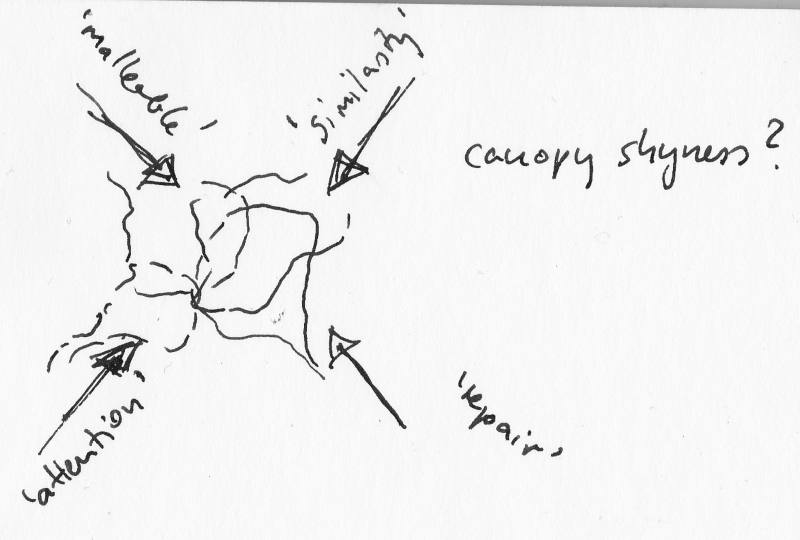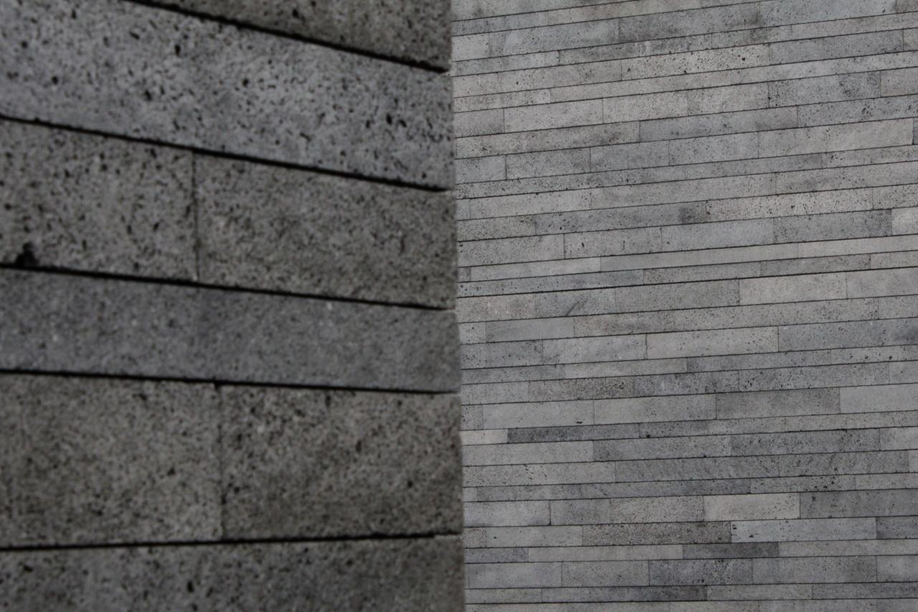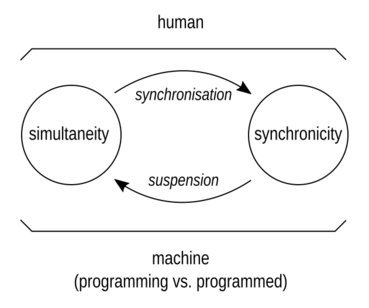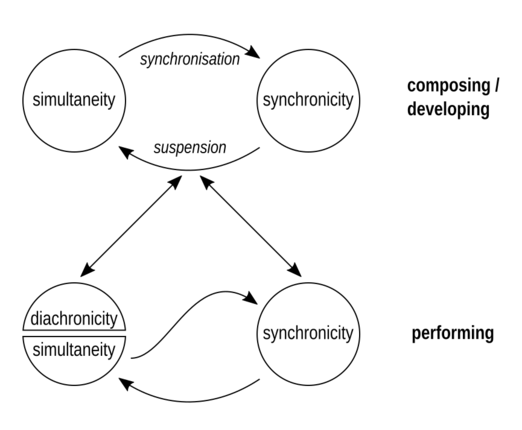Through Segments (2020) is a sound installation in an unusual interstitial space of the Graz Museum of Contemporary Art—the staircase of the Kunsthaus’ Iron House that connects to the “Friendly Alien”. Four artists listen into the storeys using real-time computer algorithms, taking an acoustical image of the visitors’ movements, forming four individual reactions. It is a poetic attempt to think about the distributed, the fragmented, the parallel. During the development phase, the artists worked independently, but at the same time they observed and interrogated each other, performing the gesture of a “simultaneous arrival” (Sara Ahmed). They enacted a human algorithm, informed by reiteration and duplication but never being identical. The aim was not one “of all converging towards the same, but circulating, making common relaying, relaying back, being relayed” (Isabelle Stengers).
Please refer to the dedicated Research Catalogue page for the documentation of the artistic research process in Through Segments.
Operations
We deployed and are suggesting to deploy a variety of methods, some related to our previous experiences, some hypothetical and to be probed. For example:
Framing the Inquiry – elaborating questions that can be useful for others.
Circulation – the capacity to come and react towards what others are doing, leaving behind a trace of the reaction, and giving the element reacted on possibilities for expansion, shaping the reaction so that it can eventually return to the others.
Continuous Notation – the expedience of verbalisation methods (text production) differs largely across the individuals within a group process, so other forms of narration are mandatory. The “import” of each artist’s form of notation can reorder the group process. Also collecting and prompting material among others is an important way to construct a significant analysis.
Temporary Bridging – to come together and establish ephemeral bridges among artists. There are different scales of these rendezvous, some are mini-condensations, some more involved, creating a connection between different artefacts, e.g. exchanging data, sending pings, creating a physical contact between elements.
Distancing – traces may develop in the form of “canopy shyness”, a mutual distancing to produce gaps between the artists. It is also a common undertaking in most art media to repeatedly dissociate from the process and observe it from distance.
Raw temporal unwinding of a timbre space in the piece Grenzwerte, “ordered” and “flattened” to two dimensions.
Foregound / Background
If thinking about sound as gestalt; can we distiguish foreground/background, and how would they relate to your sonic intervention (through speakers) within an existing sound (the sound that is already there in the space)? What then constitutes foreground/background, and are these statically assigned positions?
Reverberation
The role of reverberation; its causality versus an inner reverberation (radiation, vibration) of things, movement, people. Is it a volume, a form, accidental, reflection or complement? Does that become part of the piece?
Persistence
How does the piece “live” through time; what kind of memory does it have, is there a form of long term state or temporal dependence? Is there an element that survives past a daily restarting of the computers (is there an internal difference between the first and the last day of the exhibition)?
Simultaneity
How would you conceive the simultaneity between the four layers; where are we on the continuum between a mutual fusion or penetration of all things (John Cage), a suspension and freewheeling of the relations, and the encounter in nearness that shapes all things (Sara Ahmed)? How could the composition facilitate such simultaneity?




